Archive
05 February 2020
The breathing of dikes

When looking at a dike, you wouldn’t be able to detect any motion in this robust structure. Though in fact there is. On a millimetre level, dikes expand and shrink in relation to the weather conditions. Ece Özer showed that observing this ‘breathing’ of dikes could help prevent catastrophic flooding events. She used this feature to create an innovative model based on satellite data to better detect weaknesses in a dike.
04 February 2020
Not a band-aid but a feeder solution for our coasts
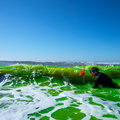
At the weekend Matthieu de Schipper likes to surf the waves but on weekdays he studies how they transport the sand along the coast and up and down beaches. ‘Sea level rise is a threat to coasts across the globe. I want to use the forces of nature to provide engineering solutions to this problem on a global scale’. At the Sand Motor project in the Netherlands De Schipper is training students to do the necessary fieldwork. In all weathers.
01 February 2020
What the Wadden can teach us
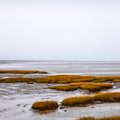
Intertidal zones are crucial for the protection of our coast and as stop-overs for migrating birds. But, increasingly, many of these sand and mudflats are disappearing permanently underneath the waves. Cynthia Maan investigated how by cooperating with nature and using a systems-based approach these precious resources can be saved.
31 January 2020
New staff member: Hassan Niazi

We warmly welcome Hassan in our department! Click here to read his introductory words.
30 January 2020
MSc Thesis proposal
Building with Nature Solutions in Flood Defenses. Looking for a student to start straightaway (early 2020).
25 January 2020
Plastic-free Rivers
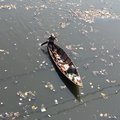
The oceans of the world are filling up with plastic waste carried there by rivers. Where it all comes from no one knows. Wim Uijttewaal, professor of Experimental Hydraulics and professor of Resources & Recycling Peter Rem are on a mission to make the rivers plastic free. ‘We want to turn the removal of plastic from rivers into big business. And we want to devise a plastic waste radar that will show where the plastic is, and how it got there.’
11 January 2020
Storm at sea: the inside story
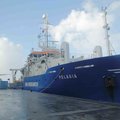
A subject of rollicking sea shanties the world over, storms at sea have always fired people’s imaginations. But knowledge of what happens underneath the waves is not quite as universal. Femke de Jong, Caroline Katsman and Carine van der Boog are preparing to don their sou’westers to investigate the inside story.
29 December 2019
The turbulent waters of the Eastern Scheldt
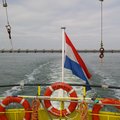
Whenever there is a problem with the Eastern Scheldt storm surge barrier, the Dutch get worried. The last time the barrier made the news was in 2013, when the stability of the barrier’s foundation protection was compromised.
25 December 2019
The Wadden Mud Motor project: making nature do the work
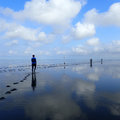
The tidal flats of the Wadden is where land and water meet. This natural environment has become familiar territory for researcher Bram van Prooijen and PhD Irene Colosimo, who both work at TU Delft’s department of Hydraulic Engineering. It’s where they are carrying out the Mud Motor project hoping it will provide them with the answer to a vital question: how to make nature work for us in such a way as to preserve the Wadden coast in a sustainable way.
22 December 2019
Follow the pretty pebbles

Rivers meander: it’s what they do. They make their way through the landscape twisting and turning as they flow. In the Netherlands a meandering river has become a rarity. ‘Many rivers worldwide have been ‘humanised’,’ says Victor Chavarrias who is researching rivers, with the Rhine as his case study. ‘200 years ago the Rhine meandered strongly. That made life in the floodplain dangerous and the transportation of goods very inefficient. To overcome these difficulties in the 19th century they started cutting the bends and narrowing the river with the construction of groynes.